What is Postman?
Postman is a free and easy-to-use development tool for making API calls with a variety of helpful features. If you're looking for a quick and easy way to get started with the Zus API with no additional code, this is the place for you.
This quickstart is a step-by-step guide that will get you up and running with Postman and Zus’s Postman workspace to enable you for ad-hoc exploration and testing.
The Zus public workspace and collections in Postman includes request templates for all of our API resources, lists all available parameters, and offers configurable variables for authenticating API requests against your account.
Recommended Reading
If you’re not familiar with Postman, these external links should be useful in understanding how to use it effectively:
- Postman Collections: Groups of API requests are called Collections. Read more here to understand this concept.
- Postman Environments: Useful to understand how variables associated with different environments (sandbox,
production, etc) are managed in Postman - Authentication with Postman: A bit more detail about how Postman handles API authentication.
Getting Started
To get started you can fork the collection from the Zus public workspace within Postman.
Forking the Collection and Environment
Forking the Collection
From within the Zus’ public workspace, fork the Zus API collection:
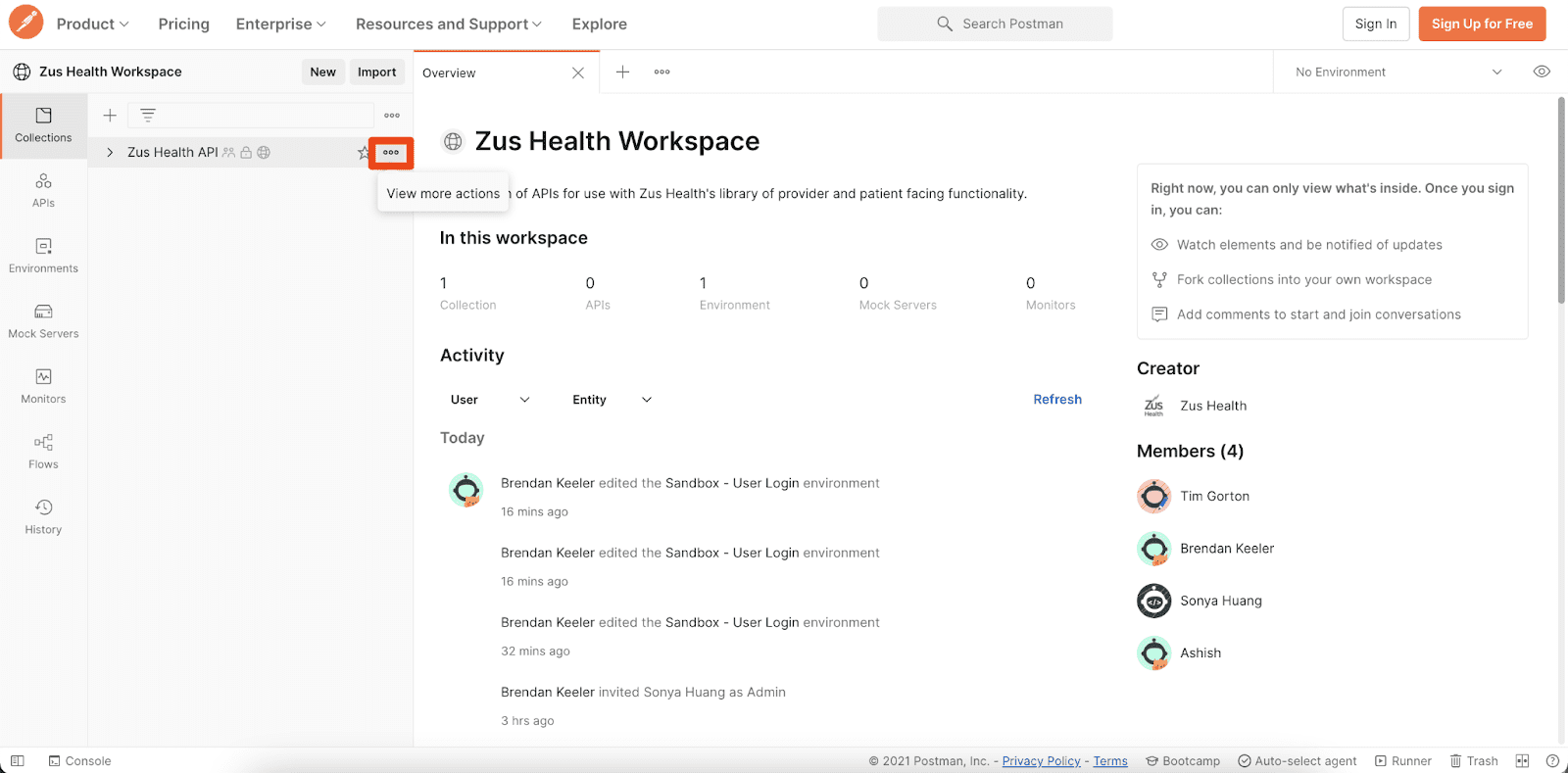

Enter a name for your fork and select the workspace where it will be created:
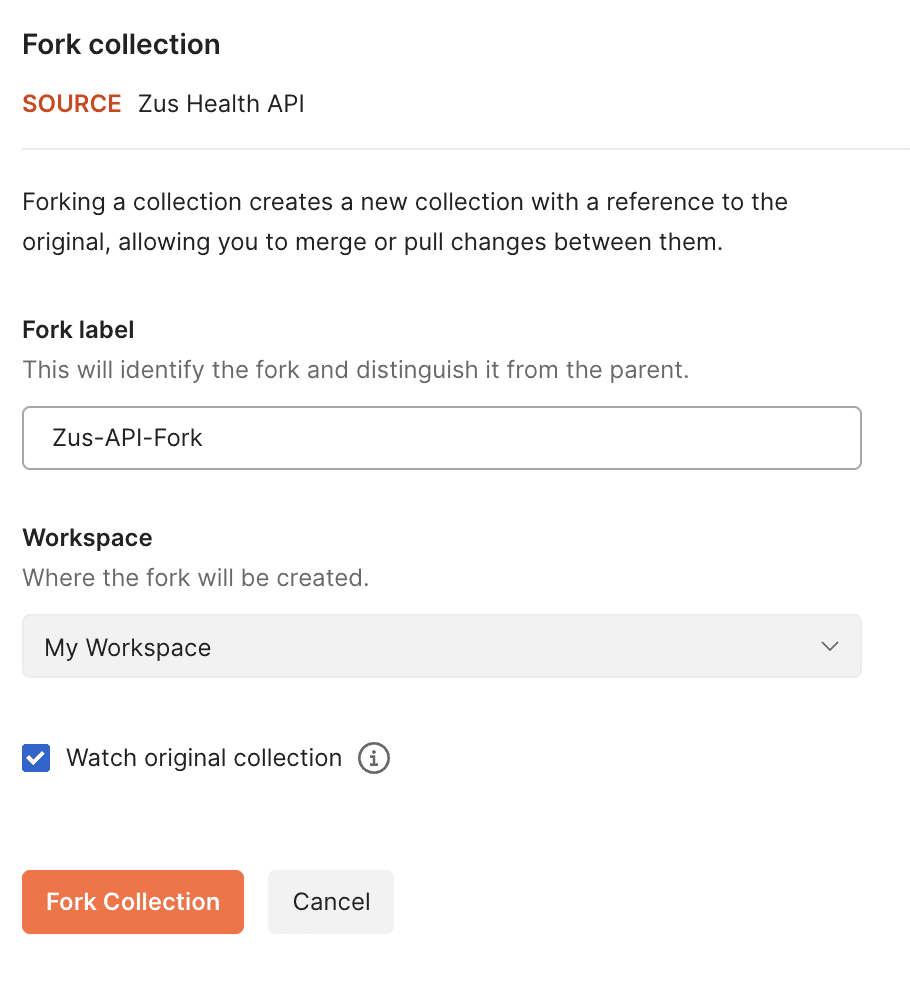
Creating a Postman Account
If you’ve never used Postman before, you’ll need to create an account in order to fork the collection. When prompted, create an account and fill out the first screen with appropriate information:
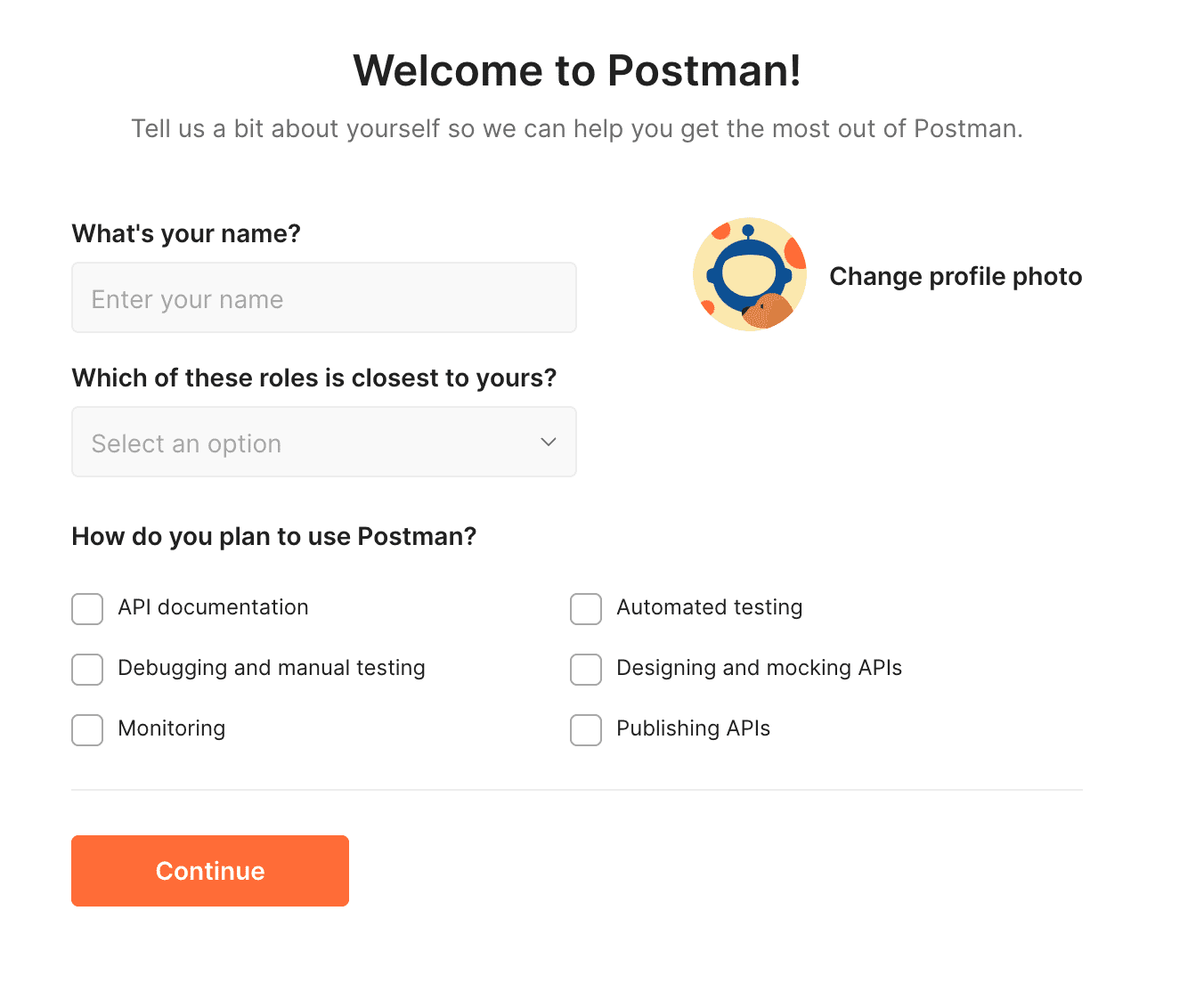
When prompted with the screen regarding team creation, you can either create a team page to share Postman information with the rest of your team or choose to just play with the APIs on your own:
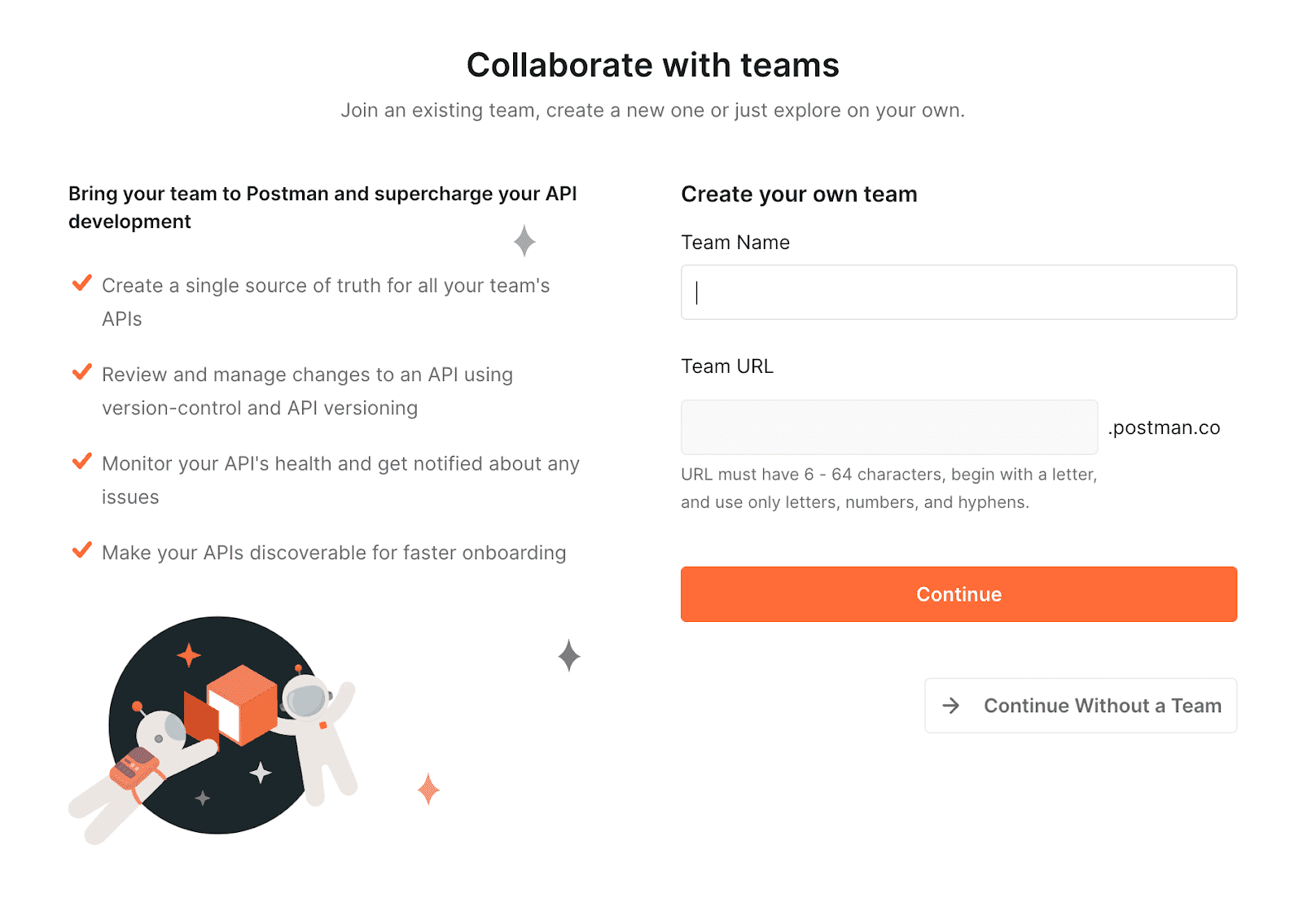
Fork the environment
You’ll also need to fork the environment variables, which define values used in the Postman requests in the collection, such as URL endpoints or API authentication details.
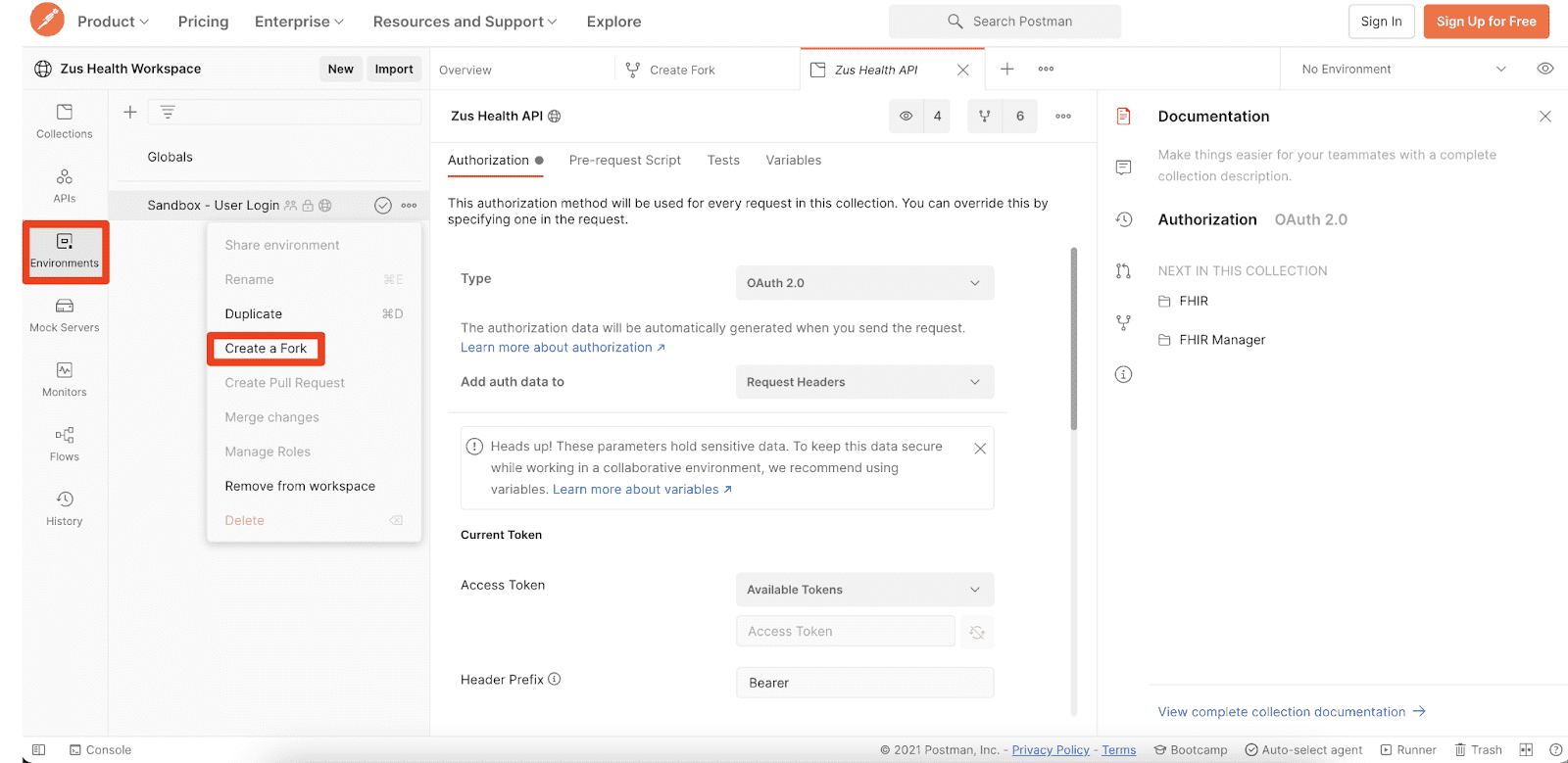
Enter a name for your fork and select the workspace where it will be created:

After forking, you’ll see the predefined variables that are used for interacting with the Zus API.
Download the collection
If you prefer a static version of the collection, you can also download that from the public workspace:
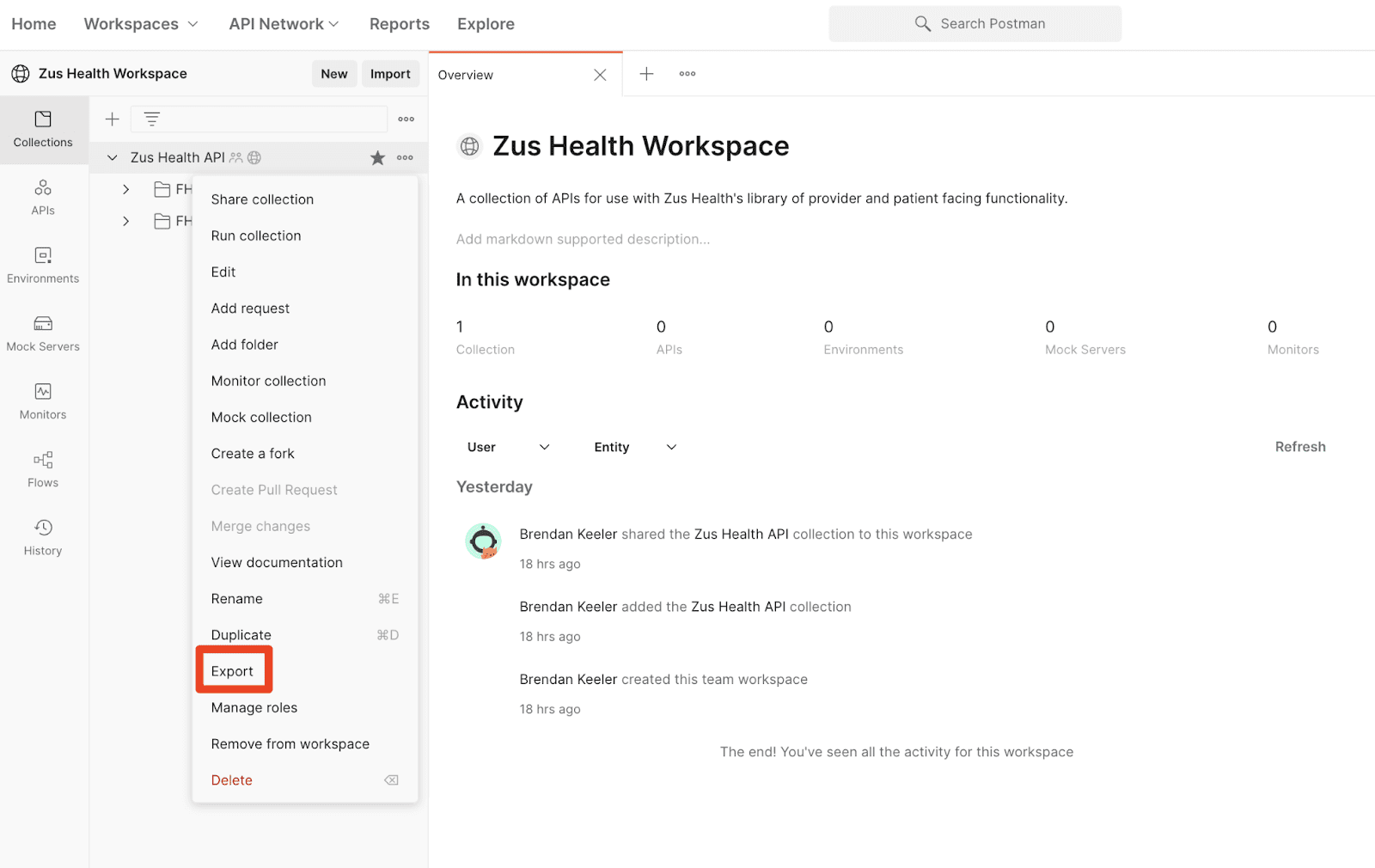
Download the environment
Likewise, if you’d like the static version of the environment, you can do so by naviating to the eye symbol in the top right corner and clicking Edit:
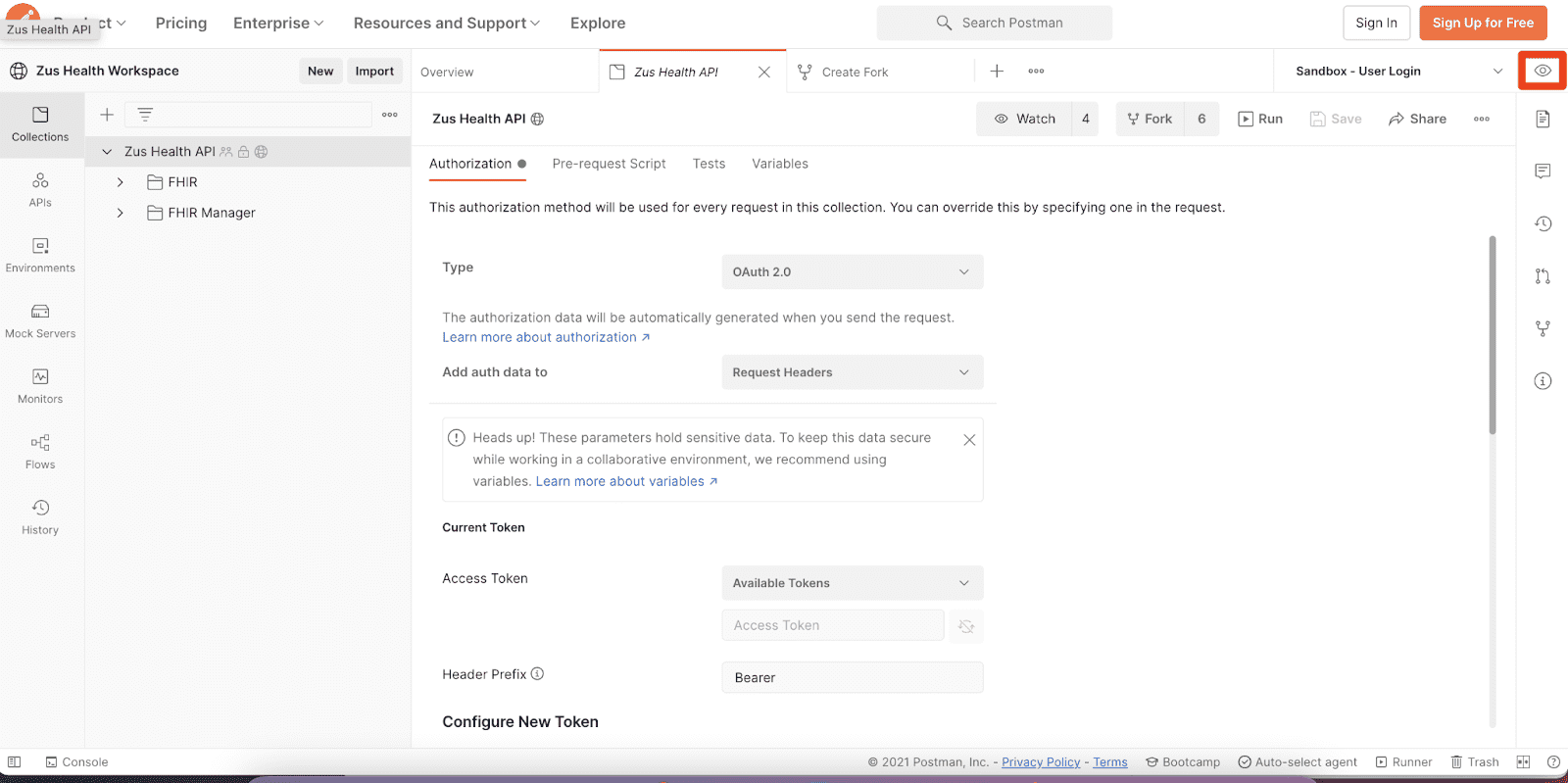
You can then import the collection and environment into your local Postman instance or the web version.
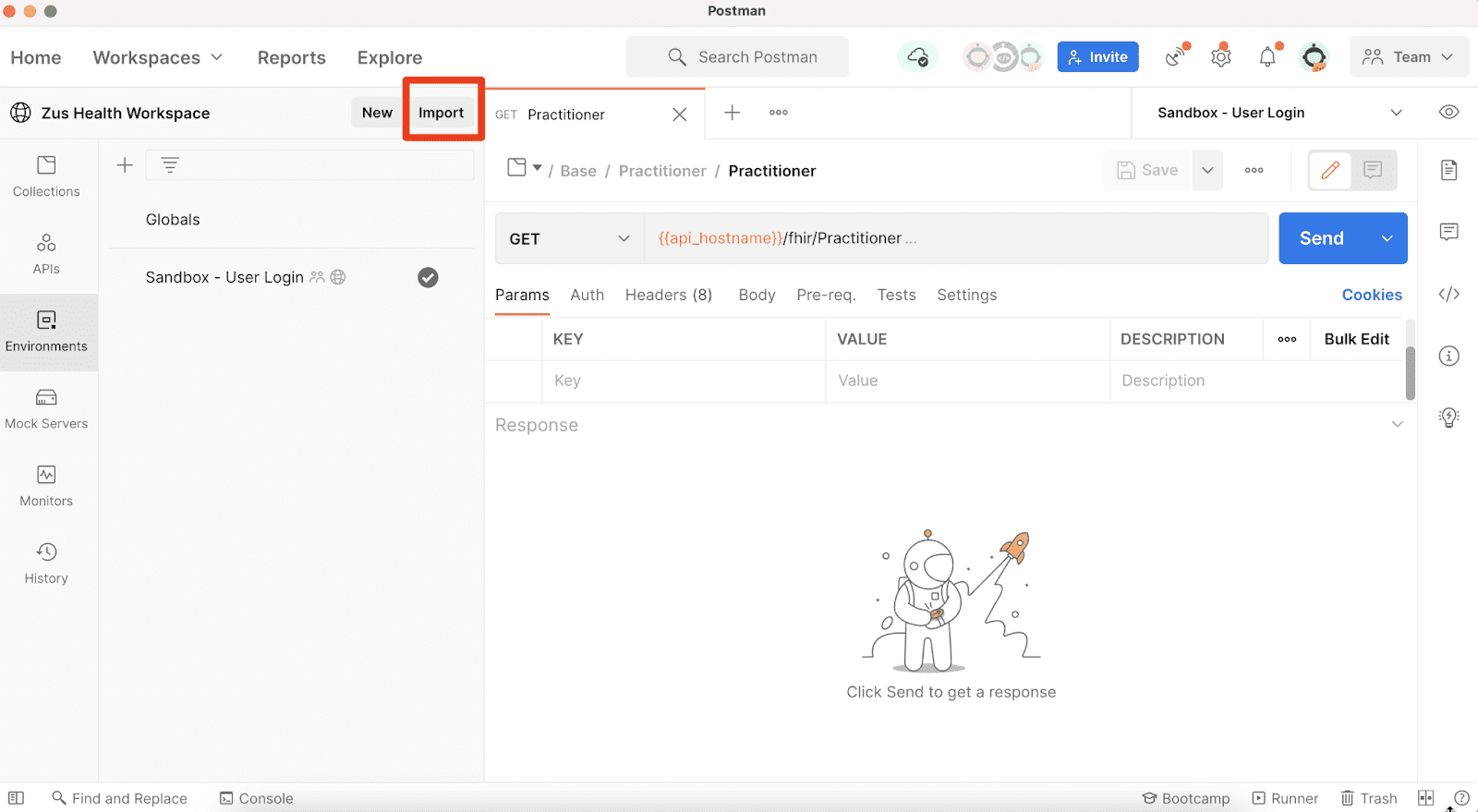
Once imported, you can start using the APIs. Check out the Authentication page to read more about those first steps in the process.
